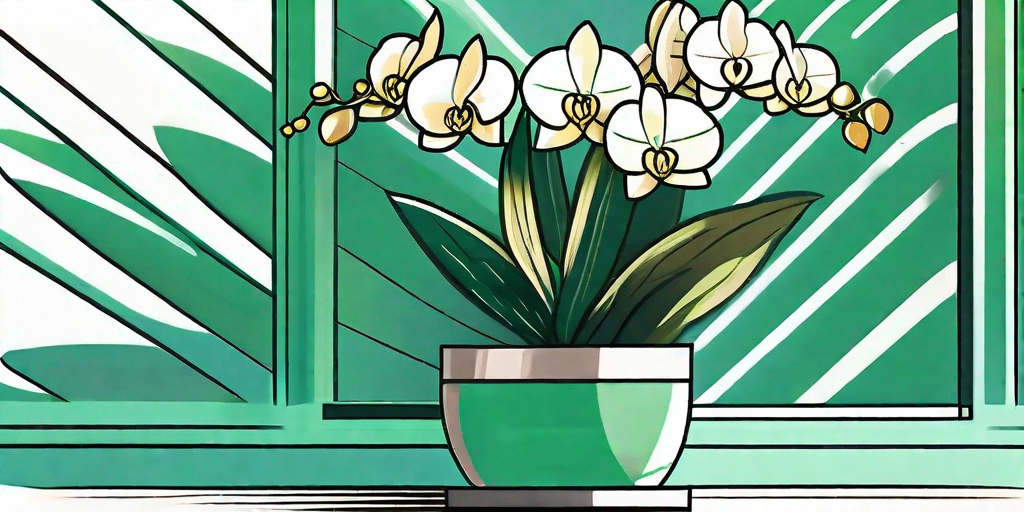
Orchids, often seen as the divas of the plant world, can transform your home into a tropical paradise with their vibrant colors and exotic allure. But don't be fooled by their high-maintenance reputation. With the right care, these beauties can be as easy to grow as your average houseplant. So, let's dive into the world of orchids and learn how to cultivate your own botanical crown.
Understanding the Orchid: A Plant Unlike Any Other
Orchids are a diverse and widespread family of flowering plants, with blooms that are often colorful and fragrant. They are known for their complex and unique structures, which have captivated botanists and plant lovers alike for centuries. But what really sets orchids apart from other plants?
Firstly, their reproductive system is a marvel of evolution. Orchids have a single reproductive organ that combines both male and female parts, a feature that has allowed them to develop intricate relationships with their pollinators. This is one of the reasons why orchids have such a wide variety of shapes, sizes, and colors.
Secondly, many orchids are epiphytes, meaning they grow on other plants for support. This doesn't mean they're parasitic – they simply use other plants as a perch from which to soak up the sun and catch falling debris. This epiphytic lifestyle has led to some fascinating adaptations, such as the development of thick, water-storing leaves and aerial roots.
Choosing Your Orchid: A Match Made in Heaven
With over 25,000 species and more than 100,000 hybrids, choosing an orchid can feel like finding a needle in a haystack. But don't worry, we're here to help you find your perfect match. Here are a few factors to consider:
Light Requirements
Orchids have diverse light requirements, ranging from bright, indirect light to low light conditions. For example, Phalaenopsis orchids (also known as moth orchids) are perfect for beginners and thrive in low light conditions, while Cattleya orchids require bright, indirect light.
Temperature and Humidity
Orchids are tropical plants, so they generally prefer warm temperatures and high humidity. However, some species, like the Dendrobium, can tolerate cooler temperatures. Make sure to research the specific needs of your chosen orchid to ensure it will be happy in your home environment.
Flowering Period and Fragrance
Some orchids bloom once a year, others several times a year, and some even continuously. The flowering period can also vary from a few days to several months. And let's not forget about fragrance – some orchids have delightful scents, while others... well, let's just say they won't be replacing your favorite perfume anytime soon.
Orchid Care 101: The Basics
Now that you've chosen your orchid, it's time to learn how to take care of it. Here are the basics:
Watering
Orchids are more likely to die from overwatering than underwatering. A good rule of thumb is to water your orchid once a week during the growing season and once every two weeks during the dormant period. But remember, this can vary depending on the type of orchid and its specific needs.
Feeding
Orchids need to be fed regularly with a balanced orchid fertilizer. This should be done every two weeks during the growing season and once a month during the dormant period. But be careful not to overfeed – too much fertilizer can harm your orchid.
Repotting
Orchids generally need to be repotted every two years or when the potting medium starts to break down. This is also a good opportunity to check the health of your orchid's roots and remove any dead or diseased parts.
Frequently Asked Questions
- Why are my orchid's leaves turning yellow?
- This can be a sign of overwatering, underwatering, or a nutrient deficiency. Check your watering schedule and the condition of your potting medium.
- Why are my orchid's buds falling off before they open?
- This is known as bud blast and can be caused by sudden changes in temperature, humidity, or light levels. Try to keep your orchid's environment as stable as possible.
- Why is my orchid not blooming?
- This could be due to insufficient light, incorrect watering, or lack of nutrients. Make sure your orchid is getting the right care and conditions it needs to bloom.
Conclusion
Orchids may seem like a challenge, but with a little knowledge and care, they can be a rewarding addition to your home. So why not give it a try? After all, who wouldn't want to live in a tropical paradise?
Remember, the key to growing a healthy orchid is understanding its specific needs and providing the right conditions. And don't be discouraged if things don't go perfectly at first – even experienced orchid growers have their share of failures. But with patience and perseverance, you'll soon have a stunning orchid plant that's the envy of all your friends.
So go on, unleash the beauty of your home with a crown of orchid. You won't regret it!















